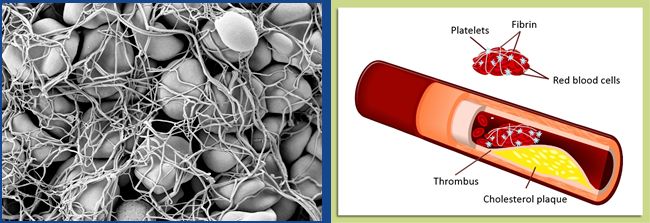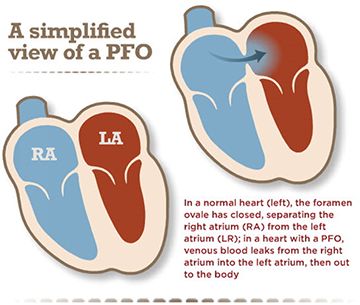
It’s World Stroke Day on October 29, and although you may have used the phrase “I almost had a stroke!” when referring to something shocking or terrible, did you know that there’s more than one type of stroke, and the type determines the treatment a patient receives?
Last Friday was like any other Friday when I work from home. I usually start working around 7.45 a.m. with a cup of tea beside me, making a list of projects that need my attention, and prioritizing them as efficiently as I can. I start working on my laptop, seated in a comfortable chair, and after an hour migrate to my desktop computer so that by 8.45 a.m. when the meat of the work begins, I have the luxury of two screens and a faster computer. But last Friday I didn’t get a chance to use that faster computer, because whilst still at my laptop, I had the most frightening experience of my life. Without any warning, I had a pounding headache and the junction of the wall and ceiling across where I sat seemed to spin to the right, and back. Faster and faster each time. I couldn’t move my head because it felt like it weighed a ton. I couldn’t move my arms because they felt like they weighed a ton. Lying down until this passed was out of the question, because I couldn’t move no matter how hard I tried. Whilst all the spinning was going on I tried not to panic and wondered whether I was having a heart attack, but since I wasn’t experiencing any chest pain, I considered the possibility of it being a stroke. Then, unlike the suddenness with which it started, the spinning began to slow down, and it felt like I was on a carousel that was slowly decelerating.
After 1.5 days of extensive testing at the hospital, although transient, all my symptoms on Friday (some also observed by the physicians at the hospital) suggest that I had a transient ischemic attack (TIA), also known as a “mini stroke”, where my motor functions were affected, but not my cognition. Stroke statistics indicate that 1 in 3 people who experience a TIA are likely to suffer a full-blown stroke, so I am now a member of a select club whose membership I never sought, but whose rules it would be wise to follow – adopt a healthier lifestyle; have slightly lower than normally acceptable levels of LDL-cholesterol (100 mg/dl are acceptable levels in general; with a history of TIA/stroke, recommended levels are <=70 mg/dl); and take a baby aspirin once a day. Perhaps the only mark a TIA leaves is this club membership, and a recollection of the unreal nature of what transpired during it.
Prevalence of stroke Most recent statistics from the World Health Organization indicate that each year, 15 million people suffer a stroke; of these almost 80% are a consequence of high blood pressure. Five million of these individuals are permanently disabled, and 5 million die. Stroke is a major cause of death in the US – fourth leading cause for females; and fifth for males. 87% of strokes are ischemic and depending on which area of the brain is deprived of blood, they cause a loss of function of that area. 13% of strokes are hemorrhagic and occur when a blood vessel ruptures and blood collects in the brain, causing cell death in those areas. The word “ischemia” comes from the Greek word “iskhaimos” which literally means stopping blood. A transient ischemic attack occurs when blood flow to (a part of) the brain is stopped for a brief period, most often because of an undissolved blood clot. The rogue clot is either eventually dissolved, or moves on and gets lodged elsewhere in the body, seldom leaving an address in the brain. Because the symptoms are transient, a TIA is often considered as a warning.
Each time your heart pumps out blood, about 15% of it is directed to the brain via a complex network of blood vessels that branch off from two major arteries, about half a centimeter in diameter, one on either side of your neck. The network includes capillaries that have diameters as small as 3 microns, about one hundredth the size of a dust mite. Consequently, even very small blood clots if not dissolved by the body’s clot-busting system, are able to enter the brain and wreak havoc.
Clots and clot-busting machinery Platelets and a few proteins in blood plasma are the main players in forming, and dissolving blood clots. When you scrape your knee or cut your finger, you rupture blood vessels and bleed. The rupturing releases specific factors which activate the platelets in your blood and a complex cascade of steps ensues, finally resulting in a clot in a process that is called coagulation. Over time, the clot becomes a scar.

Left: Red blood cells trapped in a fibrin network (magnified 5000 times). Right: Cholesterol buildup narrows blood vessels and traps clots.
The process of breaking down a clot is called fibrinolysis (literally, breaking down of the protein fibrin, which is the essential matrix of a clot) is an equally complex cascade. Fibrinolysis is essential to keep clots from growing, and for clearing the debris from the dissolved clot, reducing the risk of stroke. A key protein in this process is plasminogen which is the precursor to plasmin, the actual protein that initiates the process of breaking down a clot. For plasmin to be available, plasminogen must be activated by another protein called tissue plasminogen activator (tPA). If a stroke patient is diagnosed with an ischemic stroke within 4.5 hours of the first symptoms, damage from the stroke can be significantly reduced by treating the patient with tPA. This extra boost of injected tPA can compensate for the body’s limited response, and can initiate critical dissolution of the rogue clot.
Risk factors for stroke Several conditions can predispose someone for a TIA, including a family history of stroke; high blood pressure; high cholesterol; and diabetes. But there are still others that I became aware of only because of my experience on Friday - migraines with auras; chemotherapy; and a “hole" in the heart. As you continue to check the boxes of these risk factors, your overall risk for a TIA increases, and because you can modify only a few, it’s important to be aware and alert if you observe symptoms characteristic of a stroke – dizziness or loss of balance; sudden severe and inexplicable headaches; weakness or numbness typically on one side of your body; slurred or garbled speech; and issues with vision.
A “hole” in the heart? A fully developed heart has four chambers – two upper (atria), and two lower (ventricles) chambers. The upper chambers receive blood, and the lower chambers pump it out. The upper right chamber receives blood from the entire body, and then shunts it via a specialized one-way valve to the lower right chamber, from where it goes to the lungs. The lungs provide the essential oxygen to this blood and send it back to the heart, into the left upper chamber. This freshly oxygenated blood is then shunted to the lower left chamber via another specialized one-way valve, from where it is finally distributed to the entire body. The left and right chambers are protected from each other, preventing mixing of freshly oxygenated blood and the “spent” blood entering the heart to proceed to the lungs for oxygenation.
A fetus does not have functional lungs and depends on the mother’s lungs for getting oxygenated blood. The two upper chambers of a fetal heart are connected via an opening called the foramen ovale. This closes after birth when the baby starts breathing independently. However, in about 20-25% of babies this opening does not close and for the most part these babies will grow to adulthood and live healthy lives, without any knowledge of this persistent opening, called a patent foramen ovale (PFO). In fact, in most cases a PFO is detected only when specific echocardiograms are required to diagnose events like strokes.

A patent foramen ovale allows mixing of blood from two upper chambers. From American Heart Association
Societal impact of stroke and things to consider for yourself According to the CDC, the total cost of health care services, medications, and missed days of work because of stroke, is an estimated $34 billion per year; the annual economic burden of all cancers is $172 billion. With stroke being a leading cause of long-term disability, we can hasten the much-needed change in the national complexion of this disease by increasing an awareness of risks, and of stroke symptoms. What better day to increase awareness, than World Stroke Day?
Given the transient nature of the attack, diagnosis of a TIA is mostly through a process of elimination, even using state-of-the-art technologies. This makes it extremely important to report your symptoms as accurately as possible to the medical team that is taking care of you. The American Heart Association and American Stroke Association recommend remembering four letters and three numbers at the first possible sign of a stroke, in yourself or others: check for FAST – Face drooping; Arm weakness; Speech difficulty; Time to call 911. It’s not necessary that a stroke victim exhibits all these symptoms, nor is there a minimum number of symptoms that should appear before you call 911 – the key is to be alert, and err on the side of caution.
